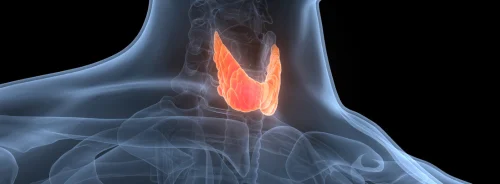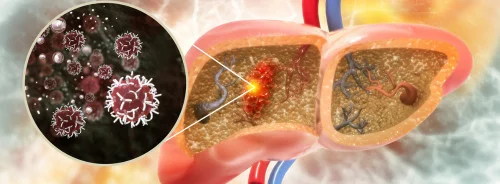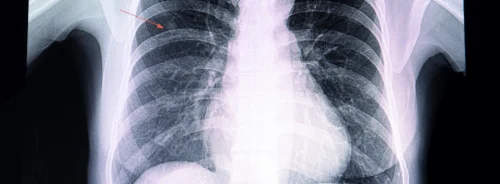HealthManagement, Volume 7 - Issue 2, 2007
Authors
Kent Fridell
Peter Aspelin
Lars Lindsköld
Nina Lundberg
Department for Clinical Science, Intervention and Technology
Karolinska Institutet Stockholm, Sweden
Lars Edgren
Skåne County Council
Greater access to digital images, enabled by PACS, has empowered clinicians outside the radiology department to view and interpret their patients’ exams.The role of the radiologist has thus shifted from an isolated position of authority with sole access to images, to that of a specialised consultant as part of an overall network. It has also led to greater involvement of the radiologist in patient care and treatment. In this article, we summarise the results of a qualitative study that monitored a select group of radiologists who were in the process of transitioning from film to digital, and examine changes in radiologists’ profession, diagnostic practice and workflow functionality.
Structure of the Study
A senior administrator at Lund University Hospital selected the participants for the study from the total of 57 radiologists at the four participating hospital departments in the Skane region using PACS. The three main interview categories were defined as: professional role, clinical practice and technology in use. All interviewees were asked the same questions in the same order in three areas: technology in use, practice related to technology in use, and professional skills and learning processes.
The questions were:
1) How did you prepare yourself for the transition to PACS?
2) How were you educated in the new technology?
3) How were the groups divided during this training?
4) How has your work practice changed?
5) How has it changed in relation to the interpretation of images, professional skills, image processing, prestige in work?
6) Has the professional radiology paradigm shifted, in relation to either threats or opportunities?
7) How has learning and diagnostic knowledge changed?
8) What trends of changes in diagnostic practice might be identified?
9) Why have these changes occurred?
10) What were the indicators of change? Changes in Radiologists’ Work
Practice: 1999 - 2005
The results of this study show trends of central changes in the radiologists’ work practice, translating from Greater access to digital images, enabled by PACS, has empowered clinicians outside the radiology department to view and interpret their patients’ exams.The role of the radiologist has thus shifted from an isolated position of authority with sole access to images, to that of a specialised consultant as part of an overall network. It has also led to greater involvement of the radiologist in patient results of a qualitative study that monitored a select group of radiologists who were in the process of transitioning from film to digital, and examine changes in radiologists’ profession, diagnostic practice and workflow functionality. junior radiologists, who identified improved possibilities to offer new and better services in the future. Junior radiologists became expert users, acting as the senior radiologists’ tutors in the digital environment.
Diagnostic Practice
In the world of analogue technology, radiologists describe the work of analysing film images as an art form, requiring considerable time and experience. Could PACS threaten this core competence? No evidence to suggest that this might be the case was found in the present study. It became clear from the interviews that the diagnostic practice at this time was strongly related to the physical object and the art of reading it.
Technology in Use
As films became digital images, they also became distributed in the sense that there was no longer one original film. Digital images could be accessed in as many ‘originals’ as were wanted. This in turn gave clinicians in other disciplines the opportunity to read the images themselves. As radiology’s ownership dissolved, would the demand for their services decrease? The interviews showed digital technology lessened the relationship to the physical object.
2000
In the second interviews, conducted after one year had passed, the radiologists had all gained experience of PACS. The general finding of these interviews was that the radiologists’ professional role was still strongly related to the individual’s professional expertise and performance.
2005
Two years had passed since the last round of interviews. The system had been updated several times and had become more stable and reliable. The radiologists felt more secure using the system, and that the advantages were greater than the disadvantages.
Professional Role
Previously, radiologists were not as involved as they are today in the treatment of patients. The use of PAC has led to a re-conceptualisation of the clinical workflow, allowing for a deeper understanding of the interaction between technology and organisations, which transforms the individual in an organisation into an actor in a network and a more actively engaged discussion partner for the clinicians.
Diagnostic Practice
The radiologists identified three features that affected clinical practice: easy access to images, new capacity to show the images to clinicians over the internet, and the 3D tool that made it possible to interpret and show large image materials in volumes instead of as separate images. As the technology was refined, the skills and the reading and interpreting of the images were available to everyone in clinical practice accessing this new distributed.
Technology in Use
The improvements made by PACS to the radiology service came about through easy access to images, which meant that clinicians could perform interpretations themselves. This created opportunities for the radiologists to engage in more complex diagnostic problems, and supported an increase of specialisation within radiology. An increase in services offered to the clinicians also became apparent, due to the new workflow. It allowed more detailed questions to be posed to the radiologists. This made radiologists feel more engaged in the overall treatment and diagnostic care of the patient.
Summary
Professional Role
It has taken time to discover and reflect on how the new distribution radiology workflow has changed the radiologist’s professional role. In practice, the flow of images has taken new routes, thus creating new relationships between the actors in the network. In 1999, when clinicians met with the radiologist in clinical meetings, the radiologist was the professional expert with experience in reading films. However, over time, as the clinicians obtained access to images, their ability to read images improved. In this process of change, the radiologist received more questions from the clinicians as their interest in and ability to view digital images and reports increased.
This is how the radiologist over time became more of a consultant to the clinical decision-makers. The study illustrates how the radiologist’s work became more distributed and physically isolated, and how they, in their role as professionals, were less well ‘served’ by ancillary staff: the radiologists became their own assistants, secretaries and archive personnel. In practice, certain activities therefore became more time-consuming for the radiologist.
Diagnostic Practice
The radiologists stated that the practice of reading films used to be an art form. However, the introduction of PACS meant the focus was on technology rather than on the skill of reading images. Suddenly, the radiologists’ learning shifted to a greater exposure to technology courses rather than interpretative diagnostic techniques. The increasing technical focus created insecurity because radiologists were worried that they would become less skilled readers of images due to the shift in focus from diagnosis to technological learning.
However, the technology improved access to a greater number of comparable cases as well as previous exams of a specific patient. Being an actor in a network, in combination with the ability to give everyone access to the basic interpretive skill through technology, has changed the scope of the radiologist’s profession.
Technology in Use
In 1999, radiologists could hold X-ray films, feel them, and know that they were looking at the whole image. This allowed them to be relatively confident in the opinions they expressed, since no extra information allowed wider scope for manipulation of the image, making the radiologist insecure. This study shows that it took about four years for the advantages of the new technology to diminish this insecurity.
Reshaping the Way Radiologists View Their Role
In the present study, an important factor in developing a new mental framework for the new workflow was the emergence of a greater insight into the advantages of the functionalities made possible by the new technology. An important feature of the new technology is its superior ability to illustrate anatomic details in the images by 3D reconstruction. Using X-ray films, the radiologist could create computer images, but 3Dreconstruction images were less informative. Using digital images, it is possible to increase the illustration of details. In this way the radiologist has become, for instance, a new and important advisor in discussions with other specialists. It is likely that there will be a development of increasing expertise in subspecialist areas, leading to better quality of care. We predict that increased specialisation is the future for radiology.
Conclusions
The aim of this study was to analyse and illustrate how PACS changed radiologists’ work practice. Work practice was divided into three areas: professional role, diagnostic practice and workflow functionality. The changing trends within the professional role indicated that radiologists moved from distinct professional experts, to an actor in a network. Diagnostic practice changed from the years of training required to read Xray films in 1999, to the egalitarian empowerment of other clinicians to view digital images and share this former ‘art form’. The change in workflow functionality as a result of the shift to digital images led to an increased specialisation of the radiologist.





